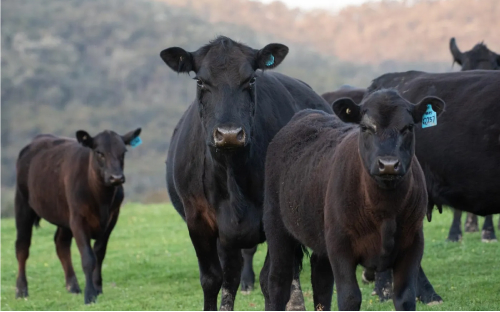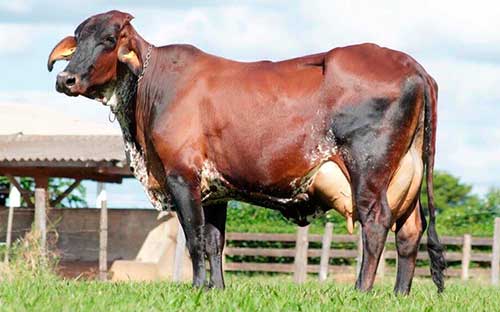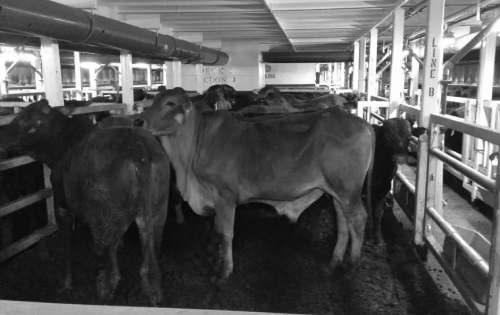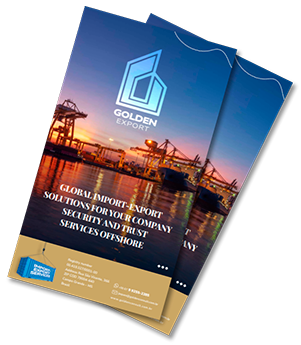STANDING CATTLE
Golden is a high-standard company that operates in the cattle trading business, serving as a crucial link between cattle breeders and buyers. Our business system is designed to provide customers with fast and straightforward access to the diverse market of live animals.
TYPES OF LIVESTOCK

Beef Breeds
FEATURES
Endurance Our breeds are bred to withstand the rigors of meat production, including transportation and processing.
Efficiency of Conversion They are typically efficient in converting grass and other forage into meat, making them suitable for grazing on pasturelands.
Temperament We work with cattle breeds have a calm and docile temperament, which makes handling and management easier.
Adaptability Also possess traits that allow them to adapt to a wide range of environmental conditions and climates, which is advantageous in different farming regions.
Maternal Instincts Our cows exhibit good maternal instincts and are capable of nurturing effitiently their calves.

Dairy Cow
FEATURES
High Milk Production Our dairy cows produce a high volume of milk per lactation cycle. This is due to selective breeding for milk yield, optimal nutrition, and good management practices.
Reproductive Efficiency We have cows have good reproductive performance, with regular estrus cycles, successful pregnancies, and timely calving intervals.
Temperament and Behavior They have Calm and docile temperament contributes to efficiency by reducing stress, improving cow handling, and ensuring consistent milk production.
Economic Viability If they have an efficiently managed, our dairy cow become economically viable, which means low costs for feed, health and other inputs.
Environmental Adaptability They can adapt to various environmental conditions, whether it's temperature extremes, housing systems, or different feeding regimes.
LOGISTICS
Golden handles live cattle logistics with a focus on the animal’s well-being through the implementation of several important practices and considerations throughout the transportation process.



Transport vehicle and conditions
It is essential to use suitable transport vehicles that provide adequate space, ventilation and protection from weather conditions (such as excessive heat or cold). Vehicles must be clean and well maintained to ensure the comfort and safety of animals during transit.
Loading and unloading protocols
Cattle must be loaded and unloaded carefully to avoid injury. Ramp angles and flooring must be designed to reduce slips and falls. Gradual loading and unloading procedures help minimize stress in this process.
Monitoring and Supervision
Monitoring of cattle during transport is carried out constantly to ensure their well-being. Trained personnel must monitor the animals to observe their behavior, provide necessary care (such as drinking water and rest breaks), and respond promptly to any signs of distress.
Regulatory Compliance
We work in accordance with animal welfare regulations and standards. Our fleet is registered and complies with local and international regulations governing the transport of livestock.
Training and education
We have transportation and handling training programs on appropriate animal welfare practices that aim for continuous improvement.
Continuous Improvement
Regular assessment and review of transportation practices and results can lead to continuous improvement in live cattle logistics. Feedback from veterinarians, animal behaviorists and stakeholders can inform adjustments to protocols to better safeguard animal welfare.
Focusing on these aspects, we act so that the logistics of live cattle prioritize the well-being of the animals, ensuring that they arrive at their destination in good health and minimizing stress throughout the transportation process.
STANDING CATTLE
Golden is a high-standard company that operates in the cattle trading business, serving as a crucial link between cattle breeders and buyers. Our business system is designed to provide customers with fast and straightforward access to the diverse market of live animals.
TYPES OF LIVESTOCK

Beef Breeds
FEATURES
Endurance Our breeds are bred to withstand the rigors of meat production, including transportation and processing.
Efficiency of Conversion They are typically efficient in converting grass and other forage into meat, making them suitable for grazing on pasturelands.
Temperament We work with cattle breeds have a calm and docile temperament, which makes handling and management easier.
Adaptability Also possess traits that allow them to adapt to a wide range of environmental conditions and climates, which is advantageous in different farming regions.
Maternal Instincts Our cows exhibit good maternal instincts and are capable of nurturing effitiently their calves.

Dairy Cow
FEATURES
High Milk Production Our dairy cows produce a high volume of milk per lactation cycle. This is due to selective breeding for milk yield, optimal nutrition, and good management practices.
Reproductive Efficiency We have cows have good reproductive performance, with regular estrus cycles, successful pregnancies, and timely calving intervals.
Temperament and Behavior They have Calm and docile temperament contributes to efficiency by reducing stress, improving cow handling, and ensuring consistent milk production.
Economic Viability If they have an efficiently managed, our dairy cow become economically viable, which means low costs for feed, health and other inputs.
Environmental Adaptability They can adapt to various environmental conditions, whether it's temperature extremes, housing systems, or different feeding regimes.
LOGISTICS
Golden handles live cattle logistics with a focus on the animal's well-being through the implementation of several important practices and considerations throughout the transportation process.
Transport vehicle and conditions
It is essential to use suitable transport vehicles that provide adequate space, ventilation and protection from weather conditions (such as excessive heat or cold). Vehicles must be clean and well maintained to ensure the comfort and safety of animals during transit.
Loading and unloading protocols
Cattle must be loaded and unloaded carefully to avoid injury. Ramp angles and flooring must be designed to reduce slips and falls. Gradual loading and unloading procedures help minimize stress in this process.
Monitoring and Supervision
Monitoring of cattle during transport is carried out constantly to ensure their well-being. Trained personnel must monitor the animals to observe their behavior, provide necessary care (such as drinking water and rest breaks), and respond promptly to any signs of distress.
Regulatory Compliance
We work in accordance with animal welfare regulations and standards. Our fleet is registered and complies with local and international regulations governing the transport of livestock.
Training and education
We have transportation and handling training programs on appropriate animal welfare practices that aim for continuous improvement.
Continuous Improvement
Regular assessment and review of transportation practices and results can lead to continuous improvement in live cattle logistics. Feedback from veterinarians, animal behaviorists and stakeholders can inform adjustments to protocols to better safeguard animal welfare.
Focusing on these aspects, we act so that the logistics of live cattle prioritize the well-being of the animals, ensuring that they arrive at their destination in good health and minimizing stress throughout the transportation process.
Do you have questions about our products? Our team is ready to assist you.
Do you have questions about our other products? Our team is ready to assist you!
- Registry number 00.419.327/0001-00
- contato@goldenconsult.com.br
- +55 67 3027-6010
- +55 67 9 9255-2285

